Obama Theatrics, Obama RealityWendy McElroyDec. 04, 2012 |
Popular 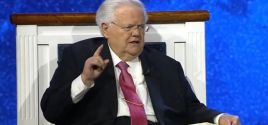
John Hagee Cheers Israel-Iran Battle as 'Gog and Magog War,' Will Lobby Congress Not to Deescalate
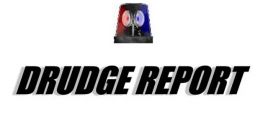
Right-Wing Media See Traffic Plummet in Wake of Algorithm Changes by Facebook, Google
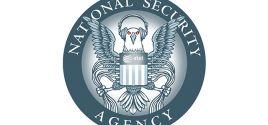
Patriot ACT on Steroids: FISA Bill Forces 'An Enormous Range' of Businesses to Act as NSA Spies
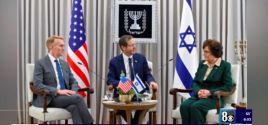
Congress Introduces ADL-Backed 'Countering Antisemitism Act' to Police Online Speech
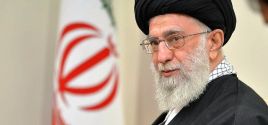
Reuters: Iran Gave 'Wide Notice' Days Before Attack on Israel
 Obama has been too quiet lately. And when he does speak, he says little of substance. For example, on the looming fiscal cliff that has America panicked, he held a press conference on Nov. 28 to urge people to tweet Congress. The only hard policy statement included was a reiteration of his well-worn proposal to not to raise taxes on families earning less than $250,000 a year. Tweets? Really? Why not have a bake sale? In Everybody’s Autobiography (1937), the American expat Gertrude Stein expressed the futility of returning to her childhood home in Oakland, Calif., by writing, “There is no there there.” The phrase has come to indicate something that is empty of meaning or substance. People who make the mistake of listening to Obama’s rhetoric often conclude there is no there there. His plans usually consist of sermons in which his voice rises and falls to emphasize phrases like “American exceptionalism” and “social justice.” They are packed with promises, but lack substance as to how anything will be accomplished. People should stop listening; they should start watching, instead, because the substance of Obama is not at the podium, but in the regulatory and other agencies he is creating to enforce de facto law without going through Congress. OBAMA’S POLITICAL METHODOLOGY In his crusade for a second crack at the presidency, Obama made many promises. He pledged to create “1 million manufacturing jobs by 2016″, to cut “oil imports in half by 2020,” and “cutting in half the growth in college tuition over the next 10 years. The means to accomplish these goals consisted of vague references to reforming tax codes and establishing “a new network of 15-20 manufacturing innovation institutes,” etc. During his Sept. 6 speech to the Democratic National Convention, however, Obama gave particular emotional stress to one passage. “It will take more than a few years for us to solve challenges that have built up over decades. It will require common effort, shared responsibility, and the kind of bold, persistent experimentation that Franklin Roosevelt pursued during the only crisis worse than this one.” Obama has long prided himself on being a political reincarnation of FDR. For years, talking heads in the media have piled on to debate the similarities and differences between specific policies of the two presidents. This approach misses the point. Of course, their specific policies differ. The circumstances of their presidencies differ. For example, the outright confiscation of gold executed by FDR in 1933 is not likely to occur under Obama, because gold no longer serves the same political and economic purpose as it did in the 1930s; the U.S. is no longer on a gold standard. The essential similarity lies in the political methodology of both presidents. The surface of the methodology is the application of charisma backed up by vague promises that bulge with noble phrases. The depth is the imposition of measures through backdoor means that bypass Congress and receive little to no public attention. For example, during his presidency (1933-1945), FDR issued well over 3,000 executive orders. (The number varies depending on the type of order included.) Generally speaking, an executive order is a presidential directive that implements policy, often by reinterpreting the Constitution or existing federal statutes. The order does not require participation by Congress and avoids public debate. Yet these orders are powerful political devices. For example, Executive Order 9066 authorized the internment of tens of thousands of Japanese-American citizens during World War II. To date, the strongest methodology parallel has been the creation and expansion of regulatory agencies. A regulatory agency is defined as “a public authority or government agency responsible for exercising autonomous authority over some area of human activity in a regulatory or supervisory capacity”. In short, the agency dictates how life must be conducted in a sprawling range of areas from agriculture to human organ transplants, from airline travel to cutting hair. The structures created under FDR were called alphabet agencies. Some were established by executive order, others by acts of Congress. More than a hundred government bodies dictated a New Deal for Americans that intruded government into virtually every corner of daily life. The alphabet agencies included: the Housing Authority, the Tennessee Valley Authority (TVA), the National Labor Relations Board (NLRB), the Farm Security Administration (FSA), and what later became the Federal Aviation Administration (FAA). The power vested in them was immense. For instance, the director of the Office of Censorship could censor international communications at “his absolute discretion.” Many, like the Social Security Administration, had a profound impact on the basics and organization of American life that lasts to this day. Under Obama, a similar proliferation of regulatory agencies and “czars” has occurred. “Czar” is the unofficial and popular label given to a high-level official appointed by the executive branch to oversee a policy or agency. For example, Obama’s intellectual property enforcement coordinator is usually referred to as the copyright czar. (The term came into popular usage during FDR’s tenure.) The number and faces of Obama czars vary widely over time, but as of May 23, there were 57 of them. On Nov. 14, The New York Times reported of Obama’s second term, “Already, the Obama administration has been moving to install tougher regulators than it had in the early part of its tenure.” The new regulators “are likely to be less intimidated by the specter of being hauled in front of Congress and yelled at, especially by House Republicans.” Regulatory agencies and czars — the enforcement arms of the executive — will be paying no heed to Congress. And as long as they fly under the radar, they need not worry about public opinion. The agencies will be free to impose Obama’s sweeping New Deal on America. WHERE THE REAL POLITICS ARE HAPPENING To understand the political street fight that is American society, you need to turn away from Obama’s distracting sleight-of-hand speeches. You need to watch the regulatory agencies. Congress may be in gridlock, but the agencies are implementing presidential policy at a gallop. Consider just one example: the Environmental Protection Agency (EPA). A Nov. 19 article in the National Review opened, “On Friday, the Environmental Protection Agency rejected petitions from the governors of Georgia, Texas, Arkansas, Delaware, Maryland, New Mexico, and North Carolina to suspend the biofuel-blending requirements established by the federal Renewable Fuel Standard (RFS) program.” The petition asked for relief from the program’s requirement to convert corn crops into ethanol. National Review explained, “The 2012 target is to blend 13.2 billion gallons of biofuel into our gasoline, a quantity that ratchets up to 13.8 billion gallons in 2013. This year, about 4.7 billion bushels, or 40% of the nation’s corn crop, will be consumed by ethanol manufacturing.” The petitioning states are economically reeling from “the worst drought in 50 years,” and the EPA czar has the power to waive the program’s requirement. She chose not to. So some food will become significantly more expensive in 2013. Those who follow the EPA know to stock up right now on specific goods that are dependent on corn. CONCLUSION Politics are being played out on the street level of regulation, not on the theater level of White House press conferences. The words coming out of Obama’s lips are distractions. Regulation is where you find the there. _ Wendy McElroy is Author, lecturer, and freelance writer, and a senior associate of the Laissez Faire Club. |



